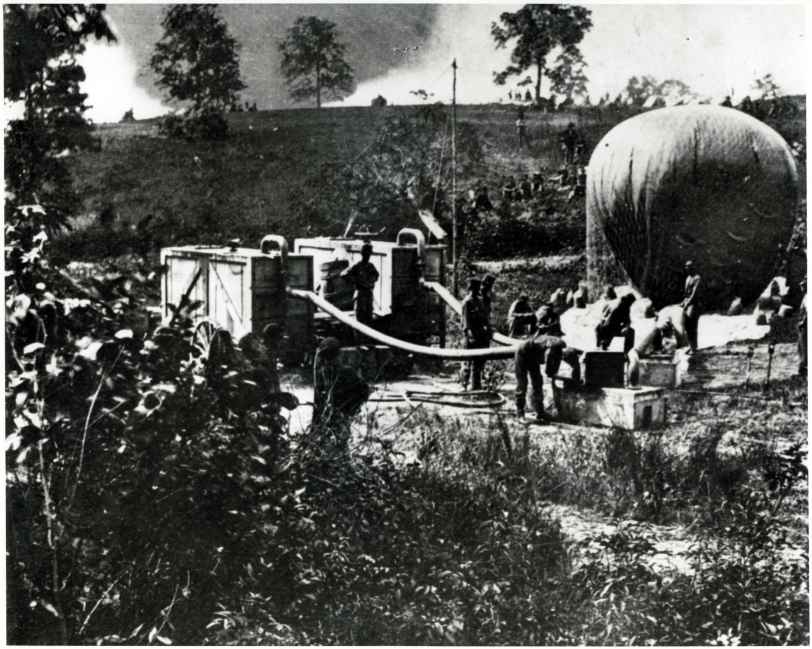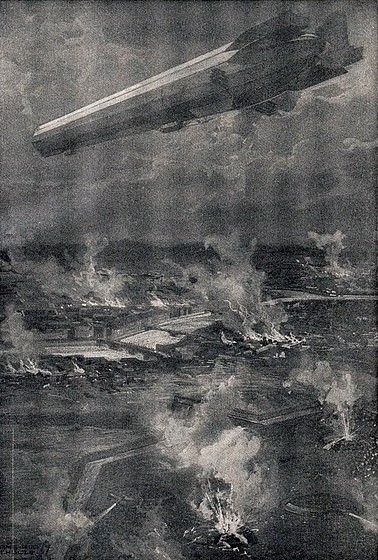How aviation first entered the military scene
Military
6 December 2020
The creation of the balloon in the 18th century led eventually to the creation of the first air force, the Compagnie des Aerostiers. The group of aeronauts soon came to good use in the Battle of Fleurus in 1794, part of the French revolution. A group of men in the balloon were able to fly high enough to see the entire Austrian army.
Later, in the American Civil War, balloons were also used. A man named Thaddeus S. C. Lowe was a balloon builder. He constructed hydrogen balloons using precision techniques and came up with the best ideas for construction and flying. In August of 1861, he was commissioned by the War Department to build a balloon for the Union army. Lowe ended up building four more balloons and began the "Aeronautic Corps" in 1862, which turned into the "Aeronautic Department" the next year.
His balloons could only fly up to an altitude 1,000 feet, which was far less than what some european inventors had achieved. However, it was more than enough to serve its reconnaissance purposes. Telegraph wires were routed to the balloons from the ground, and the observers were able to communicate in real time, which gave them a great advantage.

Thaddeus Lowe and his balloon Intrepid at the Battle of Fair Oaks. Image via Smithsonian Institution; public domain.

A German Zeppelin bombs the city of Liège, Belgium during the First World War. Public Domain.
Not to be outdone, the Confederate army also constructed a balloon after seeing those of the Union army. However, it was quickly captured in flight and the Confederate army gave up on further attempts at flight.
During World War I, all major parties were equipped with balloons, which were again used for reconnaissance. Telegraphs and telephones were wired to the balloons allowing real time communications.
One major exception to reconnaissance-only lighter-than-air aircraft came from the Germans. They were equipped with Zeppelins, rigid airships filled with hydrogen gas. The Germans were able to use their aircraft as a way to bomb civilians in England. After the war ended, they were required to give some of their Zeppelins to allied countries as reparations.
As heavier-than-air aircraft became more and more advanced, they quickly replaced lighter-than-air aircraft in military operations and we now rarely see balloons used in combat.
References
- "Battle of Fleurus:. Encyclopedia Brittanica. https://www.britannica.com/event/Battle-of-Fleurus
- Derian, James Der. "The (S)pace of International Relations: Simulation, Surveillance, and Speed." International Studies Quarterly 34, no. 3 (1990): 295-310. doi:10.2307/2600571.
- "A German Observation Balloon Ready to Ascend during the First World War". Imperial War Museum. https://airandspace.si.edu/multimedia-gallery/wwi-german-observation-balloonq54447jpg
- J. Duane Squires. "Aeronautics in the Civil War." The American Historical Review 42, no. 4 (1937): 652-69. doi:10.2307/1839448.
- Lighter, Jonathan. "The Slang of the American Expeditionary Forces in Europe, 1917-1919: An Historical Glossary." American Speech 47, no. 1/2 (1972): 5-142. doi:10.2307/3087941.
- Robinson, Ben. "World War One: How the German Zeppelin wrought terror". BBC News, August 4, 2014. https://www.bbc.com/news/uk-england-27517166
- Taylor, Alan. "World War I in Photos: Aerial Warfare". The Atlantic, April 27. 2014. https://www.theatlantic.com/photo/2014/04/world-war-i-in-photos-aerial-warfare/507326/
- Vasquez, Richard G. "Preparing the Air Operations Center to Leverage the Intelligence, Surveillance, and Reconnaissance Capabilities of Current and Future Aircraft." American Intelligence Journal 31, no. 1 (2013): 3-12. http://www.jstor.org/stable/26202034.
- Wolfe, Janet K., and Mary Jo Knouff. "Flying High For 200 Years." Science and Children 21, no. 1 (1983): 9-12. http://www.jstor.org/stable/43165728.
- "Zeppelin". Encyclopedia Brittanica. https://www.britannica.com/technology/zeppelin
- "Zeppelin Raids". The National Archives. https://www.nationalarchives.gov.uk/education/resources/zeppelin-raids/